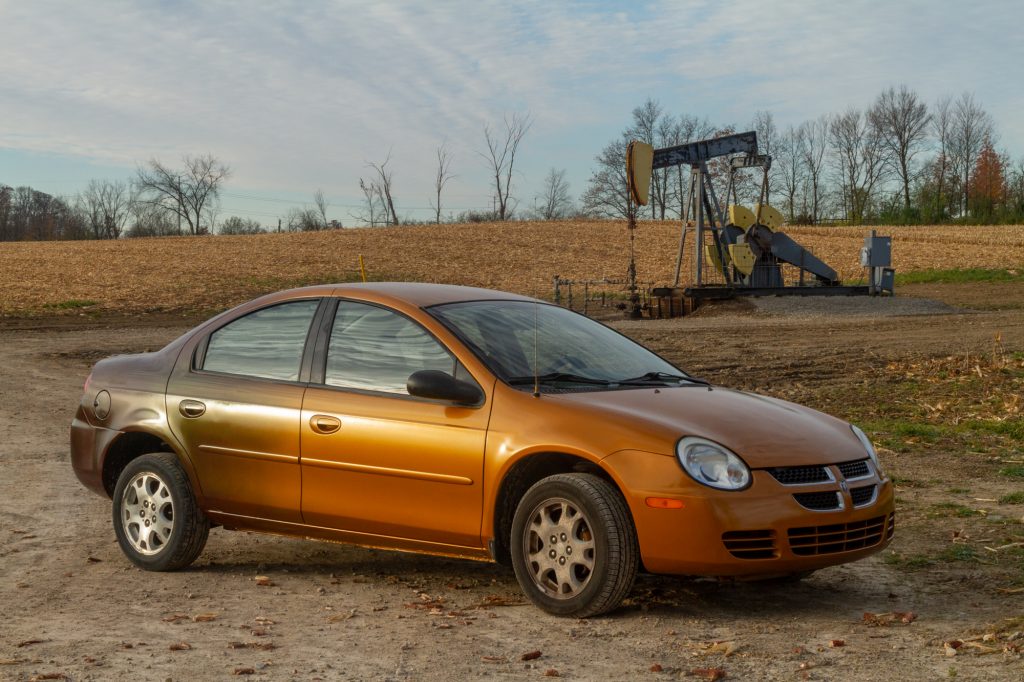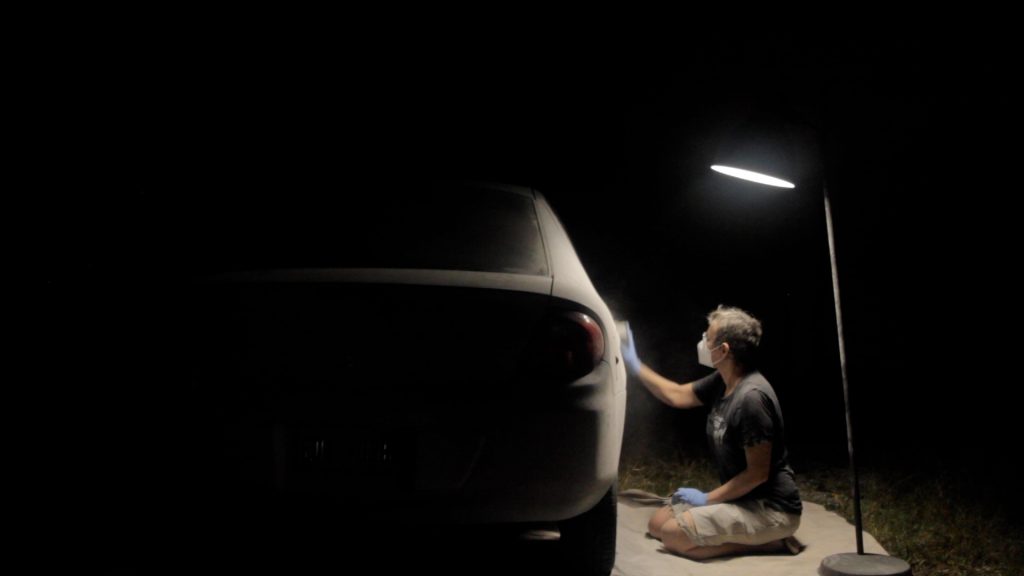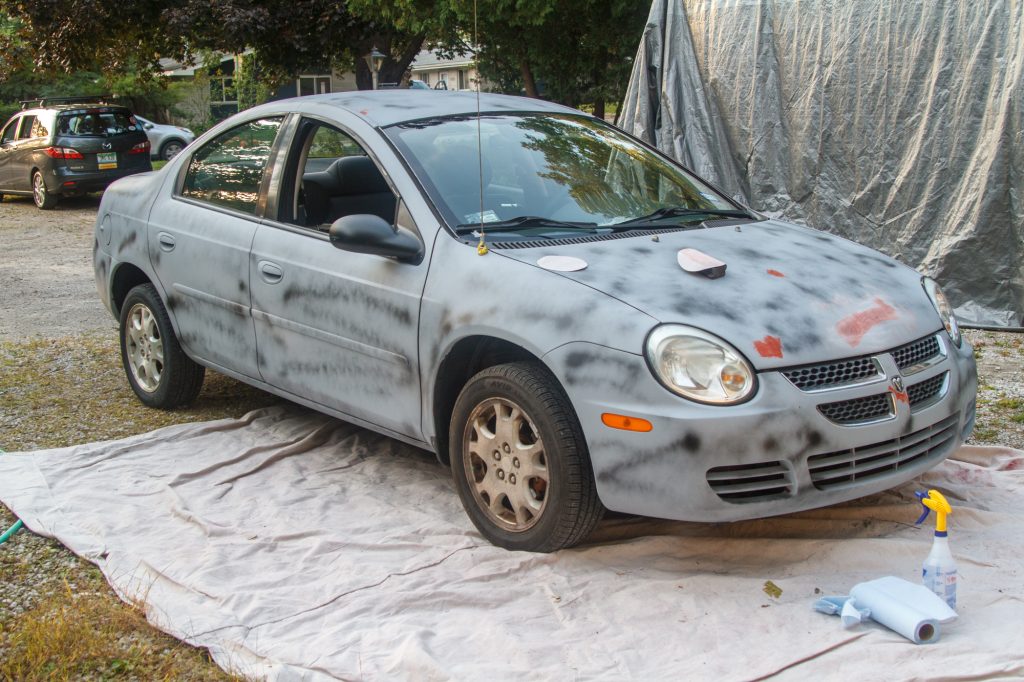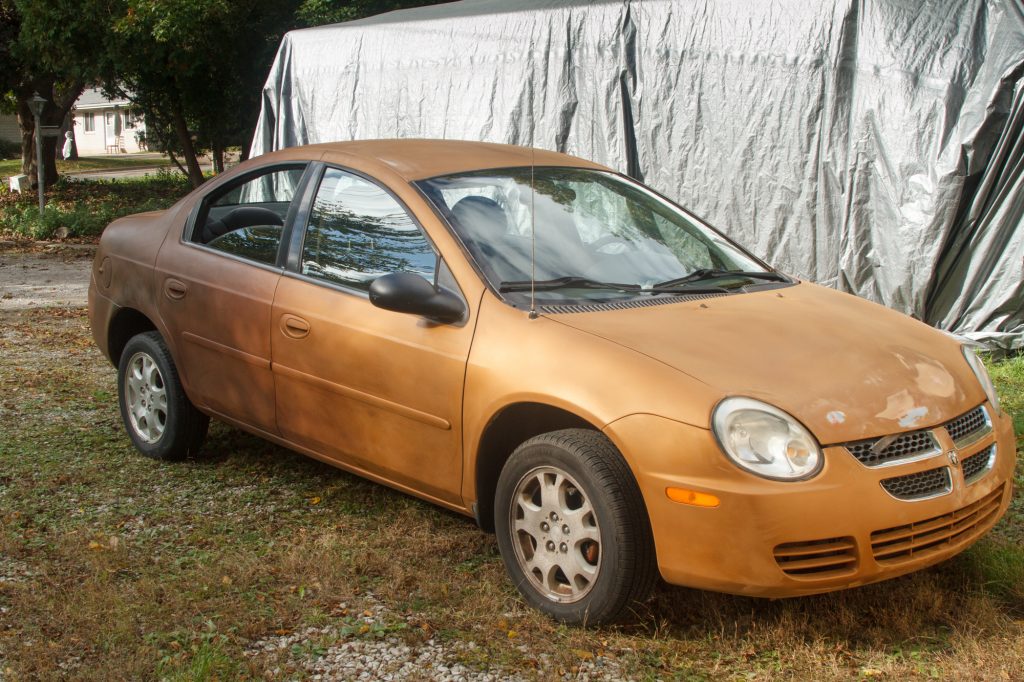
Crude Car with pump jack, 2023
This summer and fall, I repainted my 2005 gasoline-addicted sedan myself in the colors of crude oil, so that its exterior reflects what powers it.
The process involved light body work (removal of peeling clear coat, repairing rust, and filling dents and holes); sanding, priming and re-sanding; and application of base colors, metallic flake, and clear coat during three spray booth sessions. Most materials I used can be traced back to the petro-industrial complex. These processes also generated at least five gallons worth of microplastic type material, as well as VOC releases to the air, and liquid and solid materials disposed as hazardous waste.
Many who encounter the finished car do not recognize the colors of the car and what it represents. One person asked me to race at a stoplight; another wondered aloud if the car was undergoing some type of body work. Oil is ubiquitous yet invisible, out of sight and out of mind, due to its mutable nature, but also, because it is the plastic foundation of our contemporary life. It is much easier not to think about.
“… petroculture studies help to make apparent reasons for the lack of progress in attempts to transition away from oil. Recognising how oil has been made invisible in multiple places and times, and for different reasons, makes it possible to understand why oil has become in some ways, paradoxically, invisible in contemporary climate politics.” –
Anna Åberg, Kristoffer Ekberg, Susanna Lidström, “Pervasive petrocultures: histories, ideas and practices of fossil fuels”, Journal of Energy History/Revue d’Histoire de l’Énergie [Online], n°10, published 09 October 2023, consulted 5 December 2023, URL : energyhistory.eu/en/node/366
The soft launch of this project is included in the group exhibition “Grass Grows in the Icebox“, curated by Nathan Byrne, at Soft Projects in Ypsilanti, Michigan (9/23 – 12/9, 2023). The exhibition is “grounded in an exploration of the intricate relationship between eco-art and absurdity. It brings together a diverse group of artists who address environmental concerns while infusing a sense of jest into their work, resulting in a collection that ranges from the subtly humorous to the outright irreverent.”
Material expenses covered by research funds courtesy the 2023 Public Engagement Faculty Fellowship, Office of the Vice President for Research, University of Michigan. Special thanks to the Wilson Student Team Project Center at U-M.




In-process photos, 2023